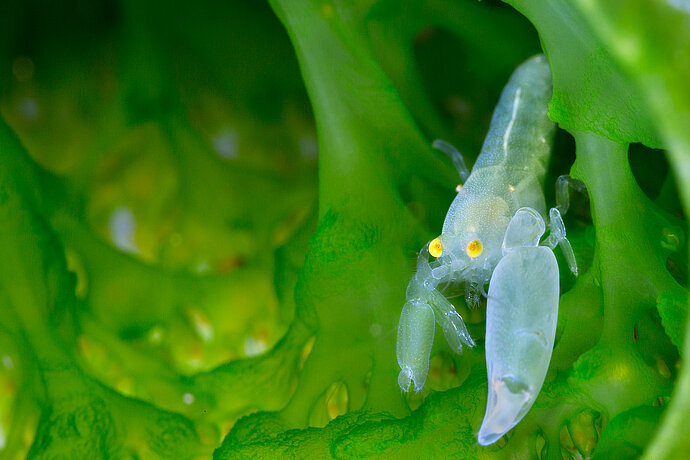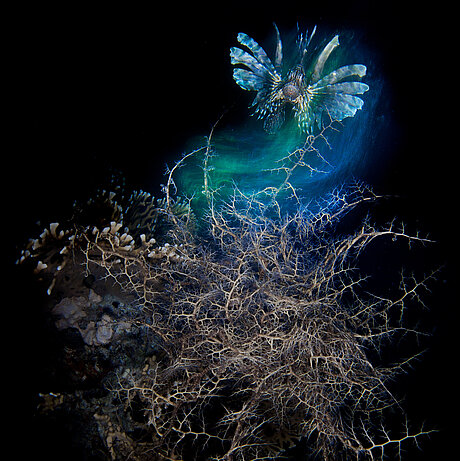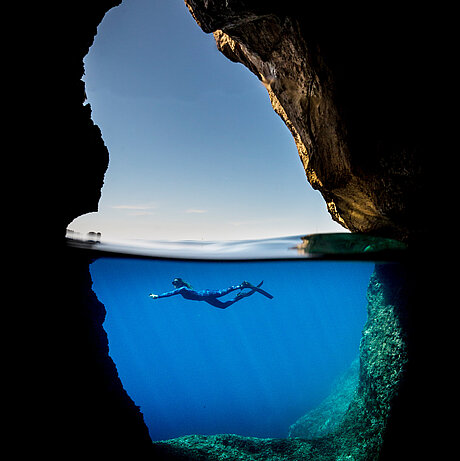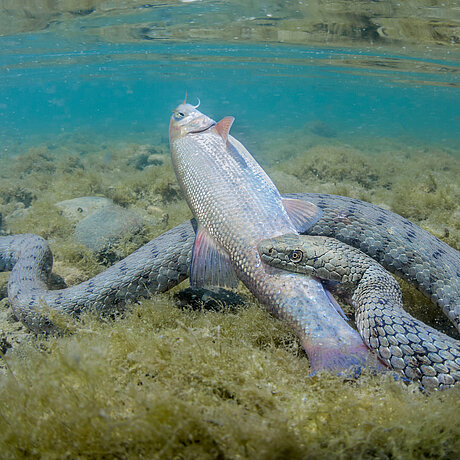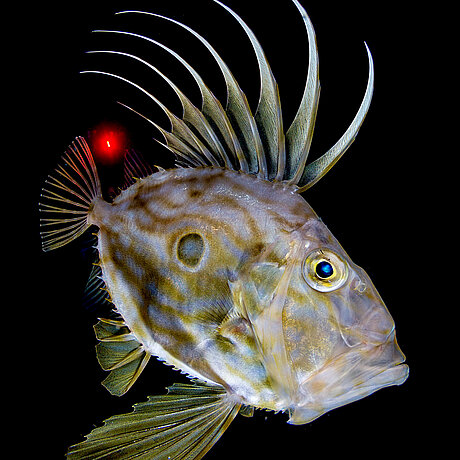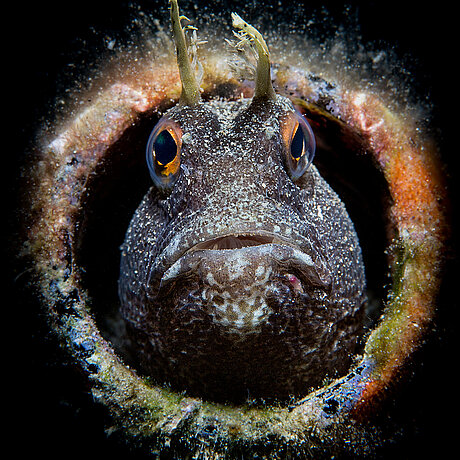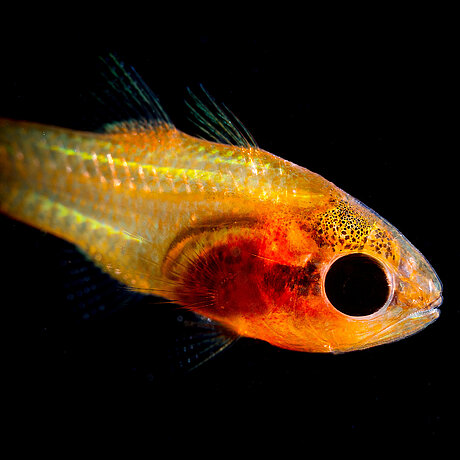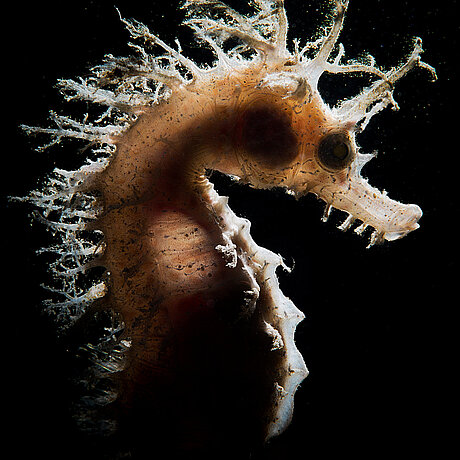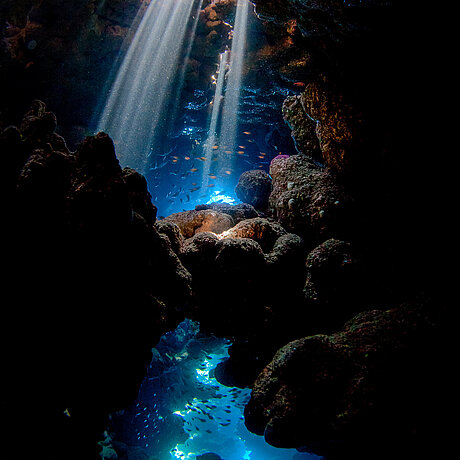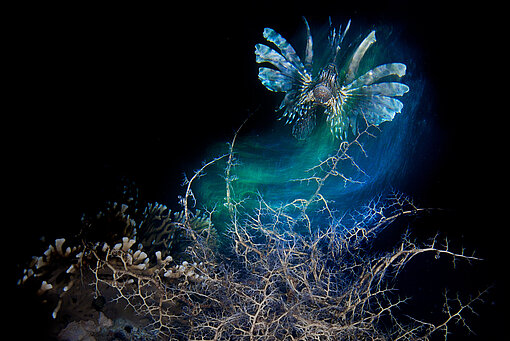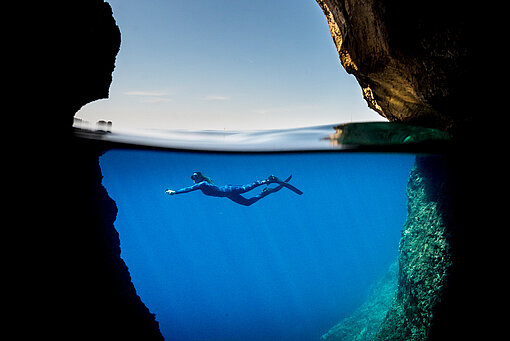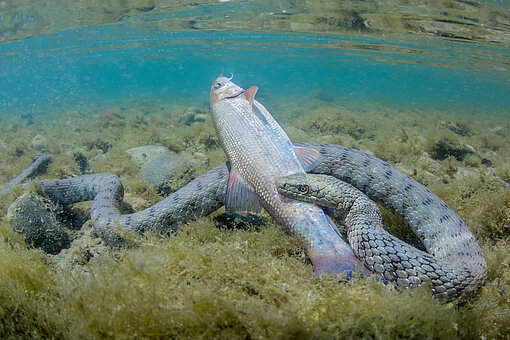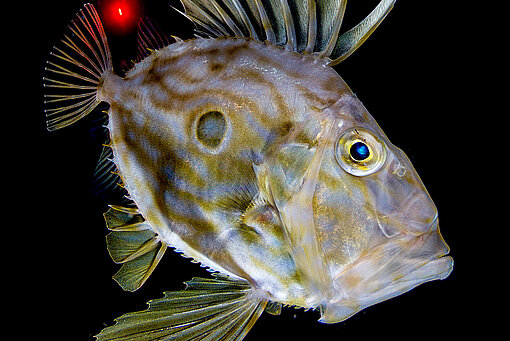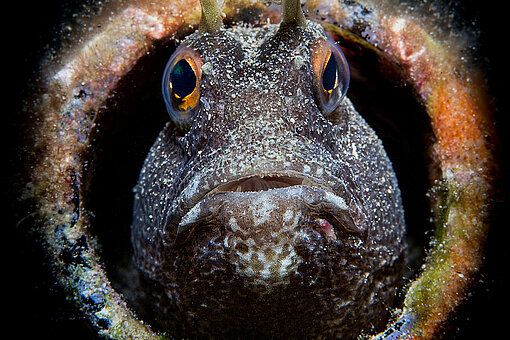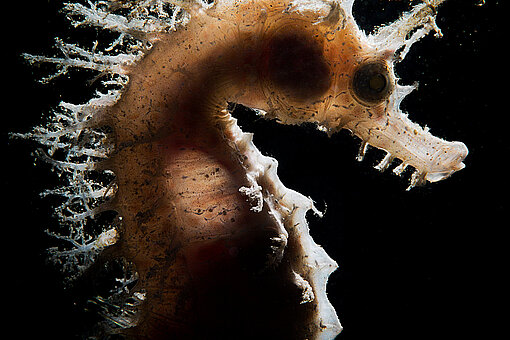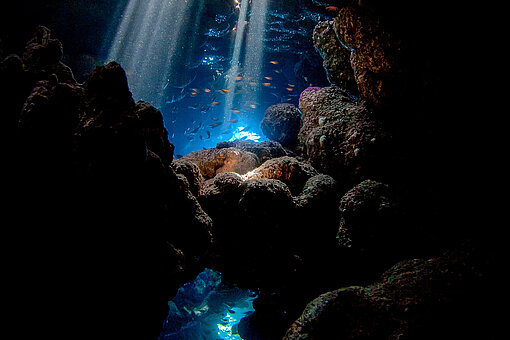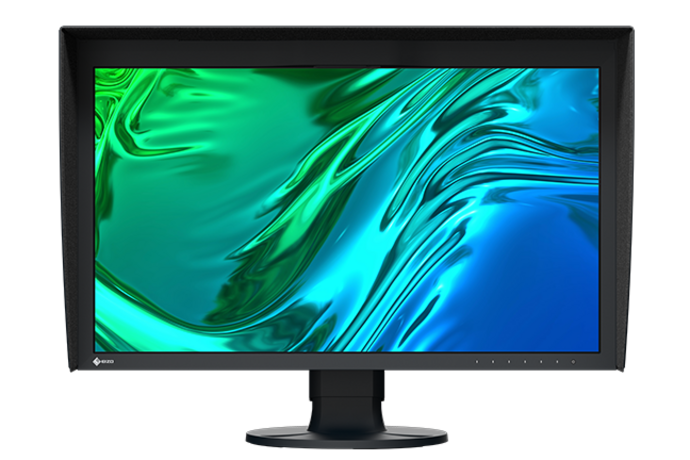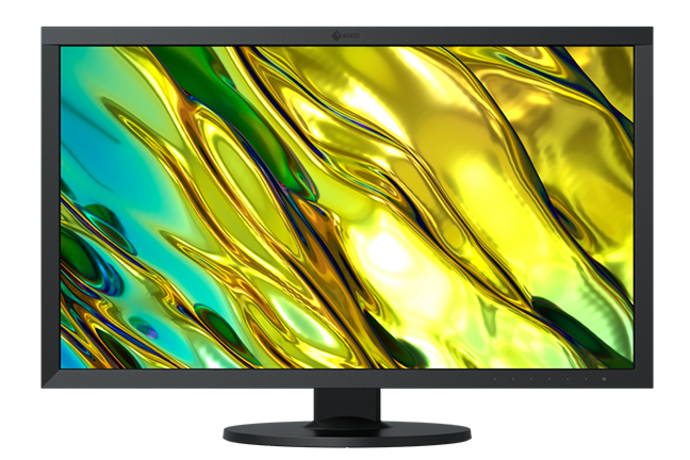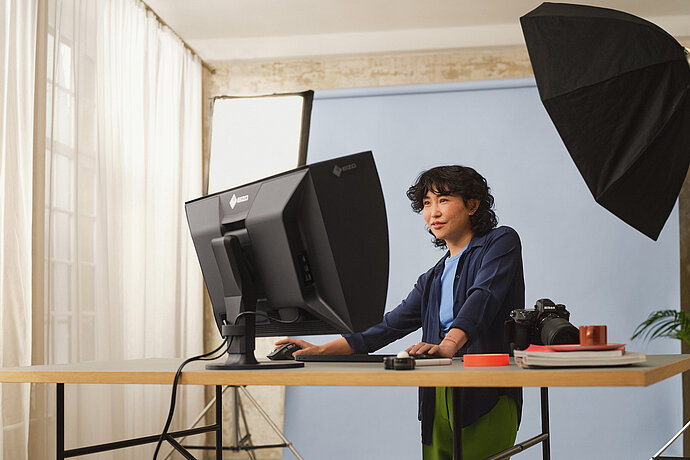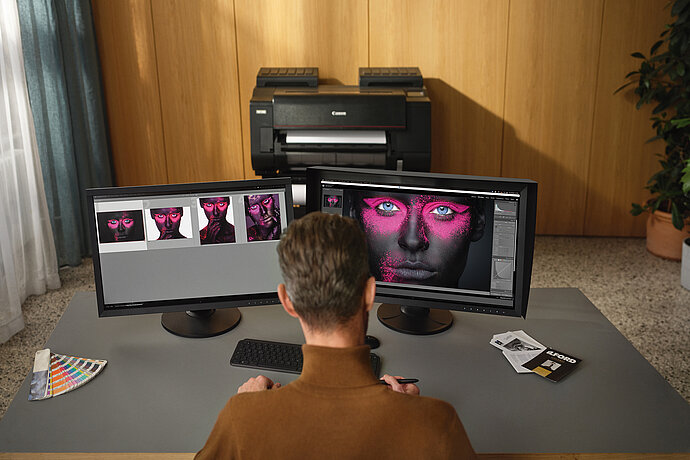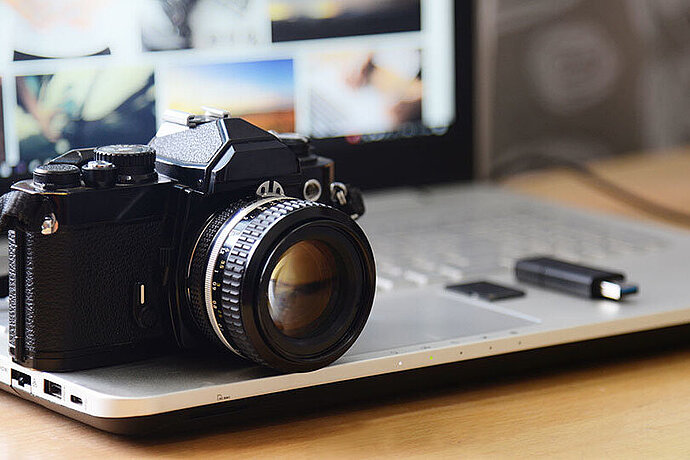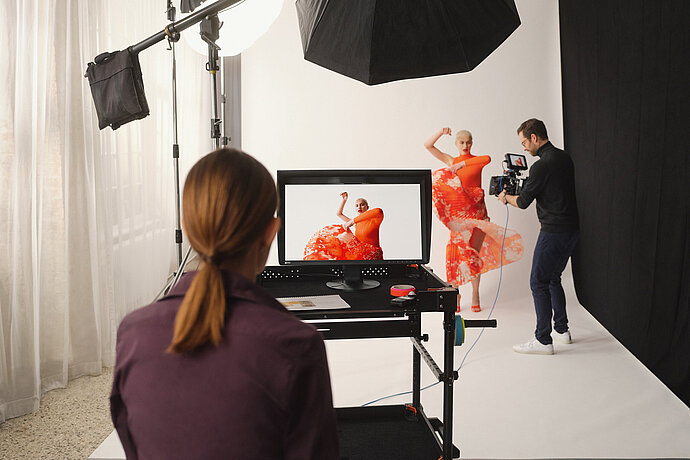The sea is a true treasure trove of wonderful creatures. The Mediterranean Sea is no different – the biodiversity on display can only be marvelled at and it must be protected. Pietro Formis dives deep below the surface of the water to capture the beauty and secrets of the underwater world in mesmerising images.
COLOREDGE Case Study
Wondrous creatures beneath the surface of the sea
Pietro Formis provides insights into underwater photography
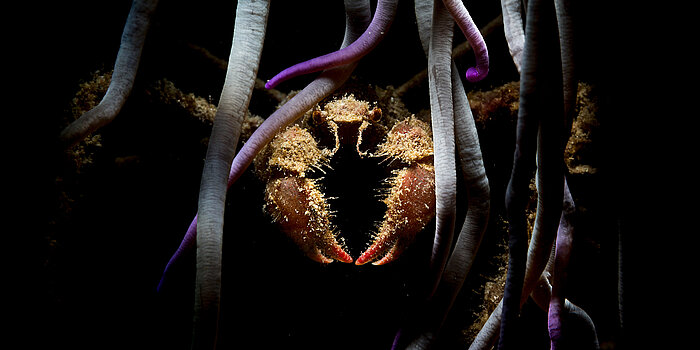
Tell us about underwater photography – where did your passion for it originate?
I took part in my first diving course over ten years ago. My father wanted to get his scuba diving licence, so I kept him company. It completely changed my life. I started taking photos less than a year later, once I had got used to the water and to diving, and I couldn’t get enough of it. I then started going on diving trips to the Red Sea and Southeast Asia more often, and my passion slowly developed into an occupation.
Now, I organise workshops at the locations I got to know when I started diving. I go diving in the Mediterranean all year long, especially in Liguria in Italy, it’s like a second home to me.
Do you only shoot underwater?
Not just underwater, no. I love nature and I’m just as happy taking photos of life on dry land, too. But my greatest passion is and will always be the world that lies beneath the surface.
Can the sunken wonders in your photographs only be found in tropical paradises or does the Mediterranean also have a few surprises of its own?
The Mediterranean Sea has no reason at all to hide behind tropical seas – it’s full of absolutely magnificent surprises. The temperate climate and the different seasons ensure you’ll have an unbelievably diverse range of encounters all year round. For example, in the colder months when the sea is rough, you can catch glimpses of monkfish, John Dory or Nudibranchs sporting the most incredible colours. In the summer, when the water is clearer, you can dive between schools of mackerel, barracuda or bream and experience the living symphony of colour on the seabed first hand – its warm tones form a beautiful contrast against the blue of the sea.
Patient is a must for anyone who wants to take photographs in the Mediterranean as you have to seek out your subjects. This especially true if you venture outside the protected areas, where the flora and fauna are sparser.
As an underwater photographer who often dives in the same location, you also have to become a guardian of sorts, watching over your patch of sea and making sure everything is alright. Sadly, a lot of people show very little respect away from the protected areas and throw rubbish and debris into the sea, or just leave their nets and fishing lines behind. The marine protected areas are extremely important and can ensure that the uniqueness of our Mediterranean isn’t lost forever. I’d love for there to be more of these protected areas in future and that they’re better and more efficiently managed.
How does someone get involved in underwater photography?
People almost always start with diving. It’s mostly diving enthusiasts who want to try out a new way of taking photos. They want to take photos of their trips and dives back home with them that do the beauty they discovered down in the depths justice. Your first encounter might be while your snorkelling – you actually don’t always have to go scuba diving with gas cylinders to shoot underwater.
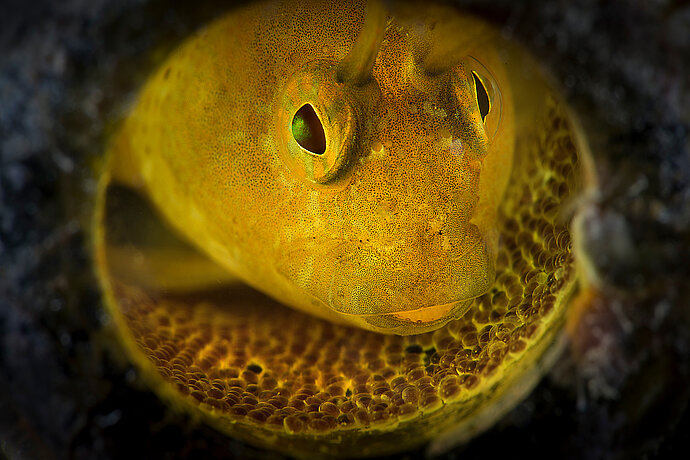
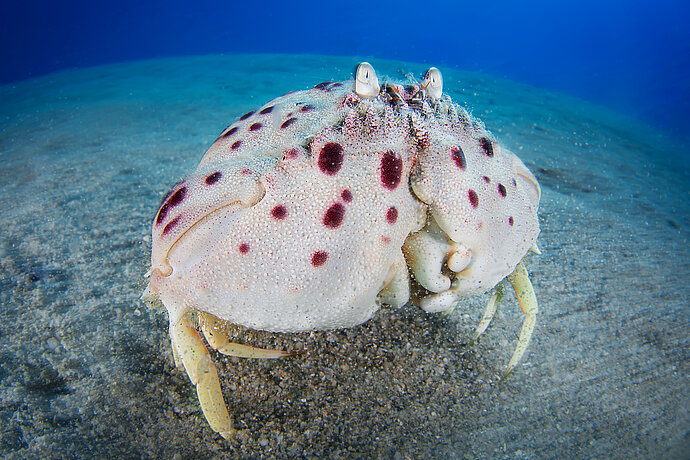
Why is this genre of photography important?
This type of photography causes anyone who’s enthusiastic about it to develop a greater sensitivity to the creatures they photograph and a greater respect for the marine habitat. You become more aware of the biodiversity and you want to make sure all of that beauty and purity stays that way. It’s becoming increasingly more difficult to capture the miracle of our oceans and it requires a lot of commitment.
That’s why I decided to also show what shouldn’t be there, such as the image of the plastic bag that looks like a jellyfish. We have to be more honest with ourselves about the consequences of our everyday behaviour.
What are the typical mistakes that photographers with less experience make?
The first mistake is generally not getting close enough to the subject. Another problem is shooting from above and almost ‘pushing’ the subject into the background in front of rocks or coral, where the subject becomes basically invisible. It’s very important to pay attention to the background and to try and highlight and appreciate the subject, instead of deflecting the viewer’s gaze and attention away from it. Concentration also plays a big part: You can quickly forget the basic principles of photography during the first few dives in particular because you’re so busy dealing with the dive itself.
Did you start with basic equipment or do you need professional technology right from the very beginning?
Everything developed little by little. My first camera was a full-on classic compact camera with polycarbonate protective housing that I bought for a few hundred euros. After that, I bought myself an underwater flash, that was an absolute necessity. Then, when the time came to really increase the quality, I switched to more sophisticated systems and got myself the appropriate equipment: a good single-lens reflex camera, a fisheye lens and a couple of good flashes. You can easily spend tens of thousands of euros on a full professional setup.
What equipment do you use now?
I have a Canon 5D Mark III with aluminium housing from Nauticam. In terms of lenses for shooting underwater, I use a Sigma 15 mm Fisheye, a Tokina 10–17 Fisheye that I use with a 1.4x teleconverter, a 100 mm L Macro from Canon, other underwater lenses with dioptre and a Canon 17–40. And I work with graphics monitors from EIZO, a hugely important partner in the world digital imagery.
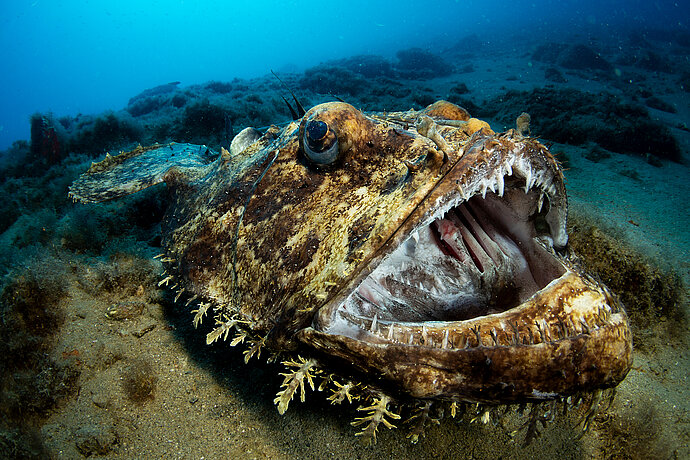
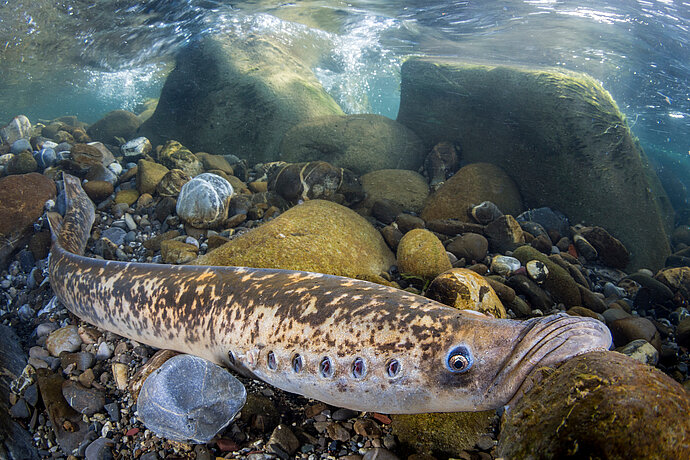
How did you hear about EIZO?
A participant on one of my courses introduced me to Roberta Scalisi, Product and Marketing Manager at EIZO Italy. I’ve known about the company for a long time, after all, it’s the first name that springs to mind when you talk about the highest quality of photography monitors.
So, that introduction resulted in a collaboration in which I offer workshops on underwater photography and can benefit from the outstanding quality of the monitors from EIZO as part of it. The next workshop is all about the post-production of images taken underwater. The aim is to provide the participants with information that is useful for both beginners and well-versed users.
Do you post-process your images?
Yes, of course, but I don’t like to overdo it. My aim is always to depict nature the way it is. This type of photography throws up tiny blemishes or imperfections that need to be corrected, for example the dominant blue tones caused by the water quality or colour deviations.
The post-production process is about adjusting the lighting and the contrast, eliminating unsightly particles that blur the image – even if it sometimes isn’t at all necessary – and optimising the sharpness of details.
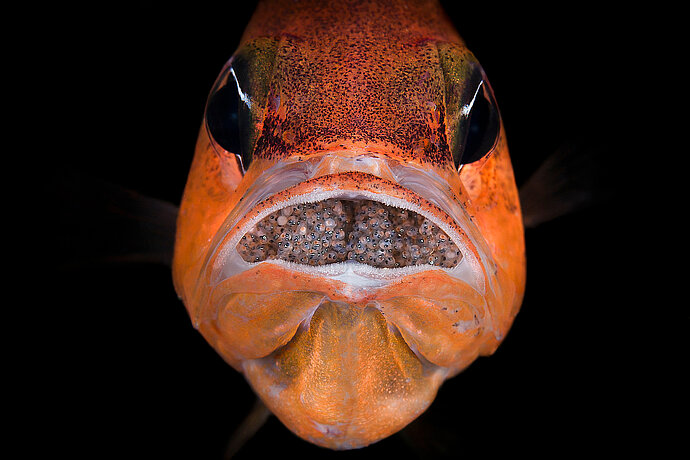
“Underwater photography is difficult to put into just one single category as there are lots of different genres – and they all have their own technical aspects, from wide-angle photography to portraits to macro photography.”
To get technical for a moment: what steps does post-production entail?
My underwater images go through a tried-and-tested process. First, the RAW file is developed using Lightroom: cropping, general exposure adjustment, colour matching, reducing dominant elements, adjusting the light contrast, shadows, black and white tones, adjustment of colour deviations and lens correction. At this point, you can also make small, selected set-up adjustments if you like.
The second step is editing the image in Photoshop. If there are any scratches or flecks on the lens, you can remove them along with particles that blur the image; you can concentrate on the details and make various final adjustments. Then, the file is exported via Lightroom.
What are your plans for the future?
I’m publishing my first book of photographs this year. It goes without saying that it’s devoted to the water.
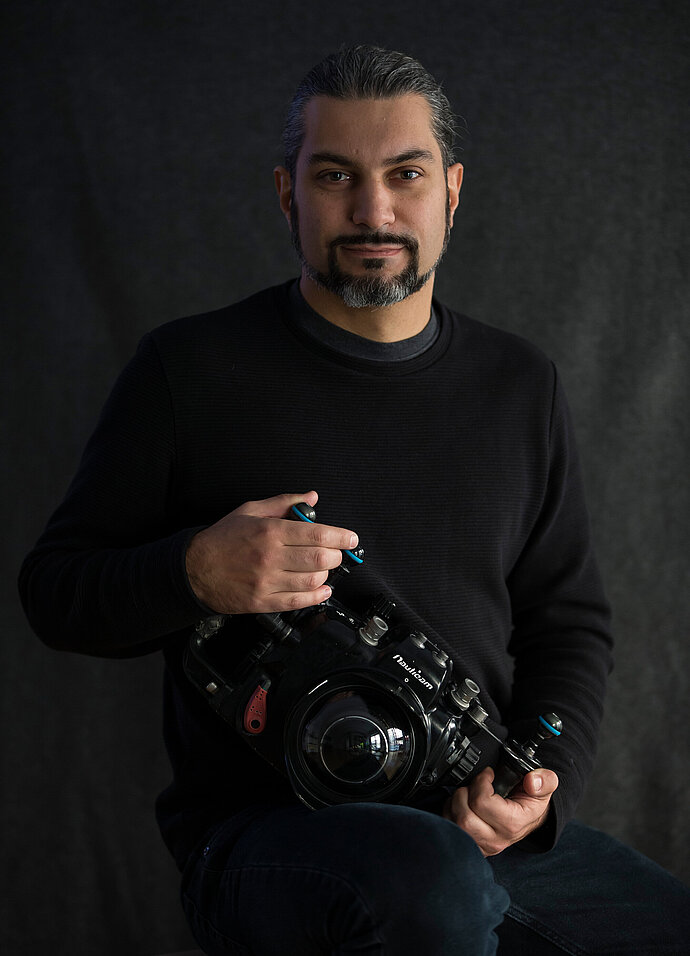
About Pietro Formis
Pietro Formis was born in Milan, Italy, in 1978 and studied visual design. In 2008, he began to pursue underwater photography. This passion has now almost become an obsession and Formis travels to tropical paradises, dives in our incredible Mediterranean Sea and explores freshwater areas on the hunt for new images to shoot.
Many of his images have been published in journals over the years, including SUB (Italy), La Rivista della Natura (Italy), Ocean Geographic (Australia), Unterwasser (Germany), Naturphoto (Germany) and Rolling Stone Italia (Italy). Formis has been honoured with multiple international awards in the realm of underwater photography, such as Underwater Photographer of the Year (UPY), European Photographer of the Year (GDT), Asferico, Ocean Geographic and Ocean Art. He leads workshop in Italy and abroad and organises photography trips.
Formis has worked in collaboration with EIZO since 2018 and relies on ColorEdge monitors to post-process his images.
Website | Facbook | Instagram
